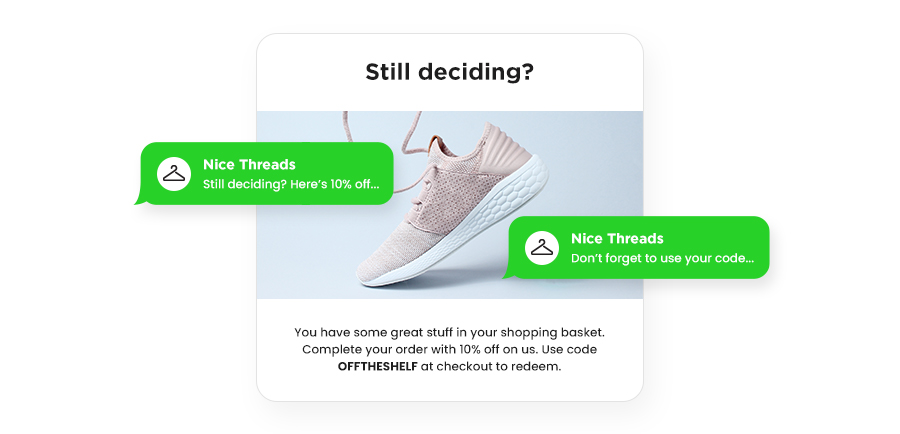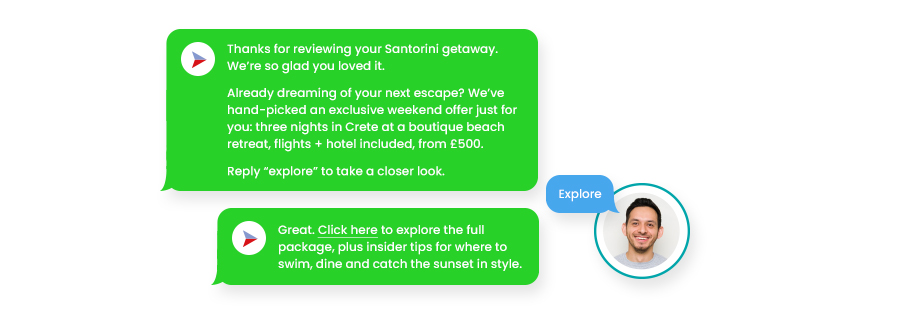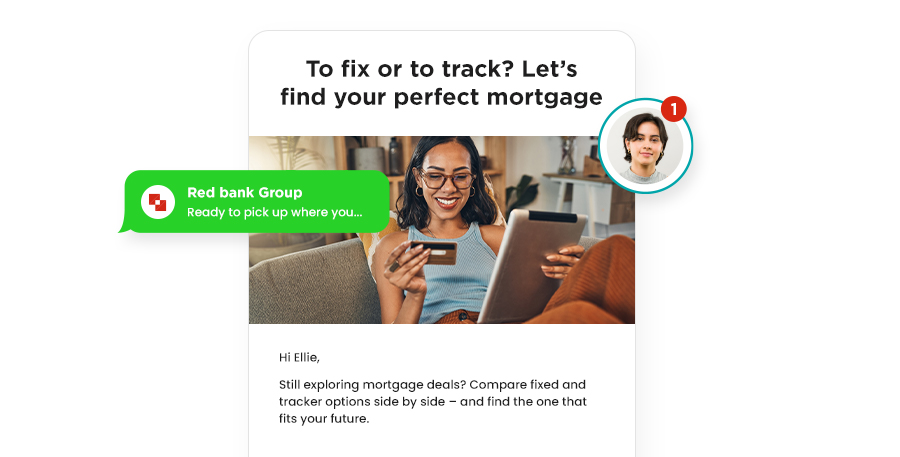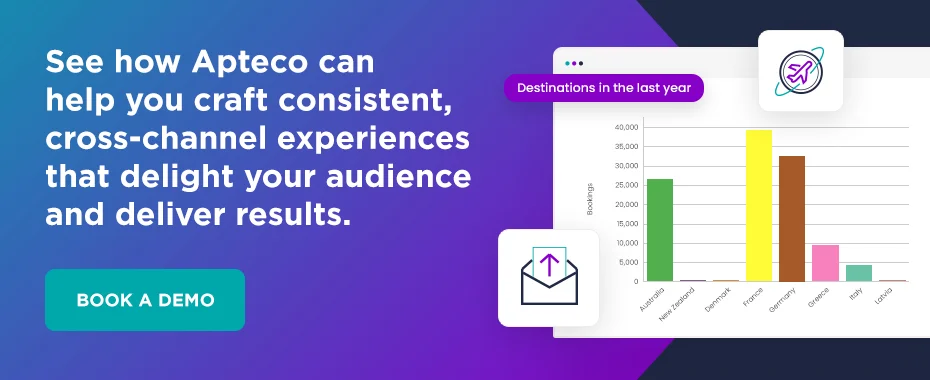Discover omni-channel marketing (and how it actually works)
06 Aug 2025 | by Katie Harvard
Omni-channel: more than just a buzzword
Even for seasoned marketers, the endless jargon in our industry can be exhausting. Every week there's a new acronym or buzzword promising to “revolutionise your customer journey.” But in the case of omni-channel marketing, it’s worth paying close attention – because this is one aspect that’s incredibly useful to master.
In simple terms, omni-channel marketing is about creating a joined-up customer experience across every touchpoint; from email and social media to your website, mobile app, and even in-store. It’s not just using lots of channels (that’s multichannel, which we’ll come to shortly). It’s using them in harmony, so each message feels consistent, relevant, and personal, no matter where or how someone interacts with your brand.
In today’s world, that kind of cohesion matters more than ever. With data pouring in from more sources (and devices) than we can count – and customer journeys becoming increasingly nonlinear and unpredictable – the real challenge is connecting the dots.
Done right, omni-channel marketing cuts through the noise, boosts engagement, builds trust, and delivers real business results. And the good news is, it doesn’t require a PhD in data science or a budget the size of a small country. Just smart thinking, the right tools, and a clear understanding of your customers.
So let’s break it down: what exactly is omni-channel marketing, why does it matter, and how can you actually make it work?
Omni-channel vs multichannel: What’s the difference?
They may sound similar, but omni-channel and multichannel marketing are not the same thing.
- As the name suggests, multichannel means using multiple channels – such as email, social media, print, SMS – but not necessarily connecting them. Each channel operates in its own little silo, like a band where everyone’s playing a different tune.
- Omni-channel means all those channels are working together harmoniously. Like a well-conducted orchestra, your messages are consistent, coordinated, and customer-centric – no matter where, when, or how someone interacts with your brand.
In other words, omni-channel is what happens when marketing is functioning smoothly across all your customer’s touchpoints.
Why omni-channel matters now more than ever
Customers today don’t think in channels. They scroll Instagram, open emails, check apps, read reviews, walk into stores, scan QR codes, and compare prices – often all before breakfast.
Research shows that omni-channel shoppers deliver a 30% higher lifetime return on investment than single-channel shoppers. In addition, retailers using three or more channels increase consumer engagement 250% more than single-channel retailers.
According to Salesforce, 76% of customers expect consistent interactions across departments and channels, while 66% expect brands to understand their unique needs and expectations.
So if you’re still sending the same message to everyone on just one channel? You’re not just behind – you might be invisible.
Let’s make it real: How omni-channel looks in practice
Here are a few examples of omni-channel marketing that actually help businesses grow – and make customers feel seen, not spammed:
🛒 Retail
A customer browses trainers online but doesn’t buy. They later receive an email with “Still deciding?” and a 10% off code. The next day, they see a retargeted ad on social media, and finally get an SMS reminding them the discount ends tonight.
One product, one message, across multiple channels – leading to one happy customer.

🗺️ Travel
A couple books flights for a holiday. They get an email itinerary, a mobile app push with check-in info, and a follow-up message offering discounted lounge access. After the trip, they’re prompted to leave a review and get personalised offers for similar destinations.

💰 Financial services
A customer starts looking at mortgage options online. They receive an email about fixed-rate vs tracker mortgages, then get a call from a rep who knows where they left off. The next time they log in, the homepage shows tailored offers based on their profile and life stage.

All of these examples have one thing in common: joined-up thinking across every stage of the journey.
The building blocks of a strong omni-channel strategy
So, how do you get started without hiring a huge team that works round the clock? Here are some essentials:
Know your customer
You can’t personalise effectively if you don’t understand who you’re talking to. That means bringing together demographic data, behaviour, preferences, and transactional history, all in one place.
Think of it like building a complete customer jigsaw. Without the full picture, you're just guessing.
Map the journey
What does your ideal customer journey look like? What happens when a customer clicks on an email? What if someone opens an email but doesn’t click? Or clicks but doesn’t convert? Mapping out the paths helps you spot drop-off points and craft responses that guide people forward.
Be channel-smart
Some people live in their inbox. Others scroll TikTok at 2am. Some prefer print (yes, it’s still a thing). The key is using the right mix of channels for each audience and campaign.
Email, social, mobile apps, SMS, print, web, in-store – whatever fits your audience, message and moment.
Keep it consistent
Nothing kills trust faster than mixed messages. (Imagine getting a “50% off” offer via email, then seeing “20% off” on Instagram. Confused? So is your customer.)
Every channel should reflect the same brand tone, offer, and customer understanding.
Automate (but don’t sound robotic)
Automation helps you stay responsive without burning out. Just make sure your messages still feel human – use customer names, reference past interactions, and add a touch of personality where you can.
Common omni-channel mistakes to avoid
Omni-channel is crucial for your campaign success, so it’s wise to be mindful of common pitfalls during planning and implementation.
❌ Too many messages, not enough meaning
While consistency is generally to be applauded, it can be too much. If every channel blasts the same message at once, it’s not omni-channel – it’s overkill. Be thoughtful, not shouty.
❌ Siloed teams and systems
Marketing, sales, and customer service need to share data and strategy. Otherwise, you’re just multitasking in chaos.
❌ Ignoring attribution
Not every sale comes from the last click. Understand which touchpoints played a role – first, middle, and last – so you can optimise your campaigns holistically.
How Apteco makes omni-channel marketing manageable
Here’s the good news: you don’t need a giant marketing team or a room full of spreadsheets to make this work. Apteco gives marketers the tools to take control of the entire customer journey from start to finish, through one powerful platform.
With Apteco Orbit, you can:
- Build multi-stage, cross-channel campaigns with drag-and-drop ease
- Personalise content based on behaviour, profile, and preferences
- Send emails, print pieces, mobile messages and more – all from the same system
- Use attribution models to understand what’s really driving conversions
- Monitor results in real time and adjust on the fly
Omni-channel isn’t just a marketing trend — it’s a customer expectation
Omni-channel isn’t about being everywhere all at once. It’s about being relevant, responsive, and respectful of your customer’s time and preferences.
When done right, it leads to happier customers, smarter campaigns, and better results for everyone.


